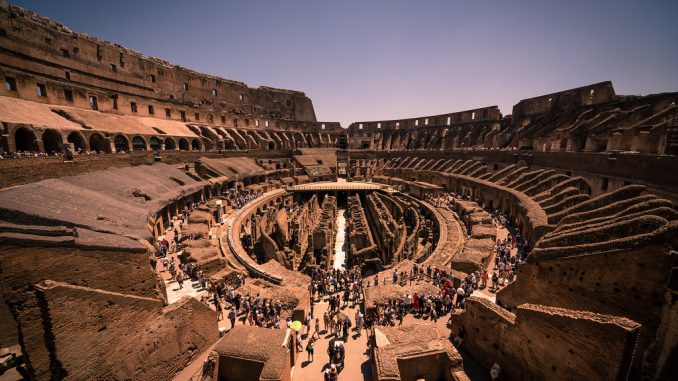
The Colosseum is one of the Seven Wonders of the Ancient World, being a monument visited by thousands of tourists daily, and it is known for many of the myths it hides within. Its real name is the Flavian Amphitheater, as the monument was built at the request of Emperor Vespasian and later opened by his successor Titus, both of whom are part of the Flavian family.
In the old days, this amphitheater was used as an arena for gladiators and other public events or theater shows and various hunting expeditions. The name “Colosseum” became known in the Middle Ages, thanks to its resemblance to a huge statue of imposing structure that depicted Nero.
In Christian times this monument was considered a pagan symbol, and during this period most legends and myths about the famous monument began to appear. Many of these were spread by Christians, who considered it a place of perdition and greed.
Here are the most important legends and facts about the famous monument in Rome.
Colosseum – a gateway to hell
In the Middle Ages, the Colosseum was considered one of the seven access gates in hell because of the many gladiator fights which took place. Legend says that, at the end of each fight, Charon, a mysterious figure, appeared to transport the souls of those who died to the world beyond. According to the legend, he uses red iron to check if the gladiators were dead.
Colosseum – the favorite location of the ghosts
Another legend about the famous Colosseum claims that the souls of the wrestlers who died during the battles remained confined between the two worlds within Rome’s famous monument. So far there are still people who support the myth that the ancient amphitheater is a place where ghosts go and make heavy, noisy chains.
Colosseum – the place where the temple of Beelzebub is located
Another myth that emerged in the Middle Ages is that there is a temple dedicated to Beelzebub. The Bible references to him are “the prince of all devils”. Legend also claimed that the name of the famous memorial is derived from the amphitheater, a term translated into the words “worship him (Beelzebub)”
Colosseum – a secret location where magical rituals are held
According to medieval legends, the famous poet Virgil performed various magic rituals within the famous Colosseum. It was also believed that in the fifteenth century, wizards used to meet inside the majestic building to prepare magic potions made from the herbs which only grew there.
Over time, many non-native plants were discovered and believed to have been used and found the legends of the magical rituals that took place inside the Flavian Amphitheater, over time.
Colosseum – the main element in a prophecy about the Apocalypse
The famous Colosseum also appears in the prophecy of an English monk, famous for the historical books he wrote over time. According to him, the collapse of Rome and then the whole world depends on the well-being of the Flavian Amphitheater. This prophecy is symbolic and in fact represents a pagan warning against the triumph of Christianity on the Roman Empire.
The famous Colosseum in Rome is undoubtedly one of the finest architectural structures in the ancient world. Myths and prophecies on this subject raise the curiosity of thousands of tourists who come here to discover the place every year. If you’re one of those people who are interested in visiting the wonders of the ancient world, you can discover the most interesting offers for a holiday in Rome here.



Be the first to comment